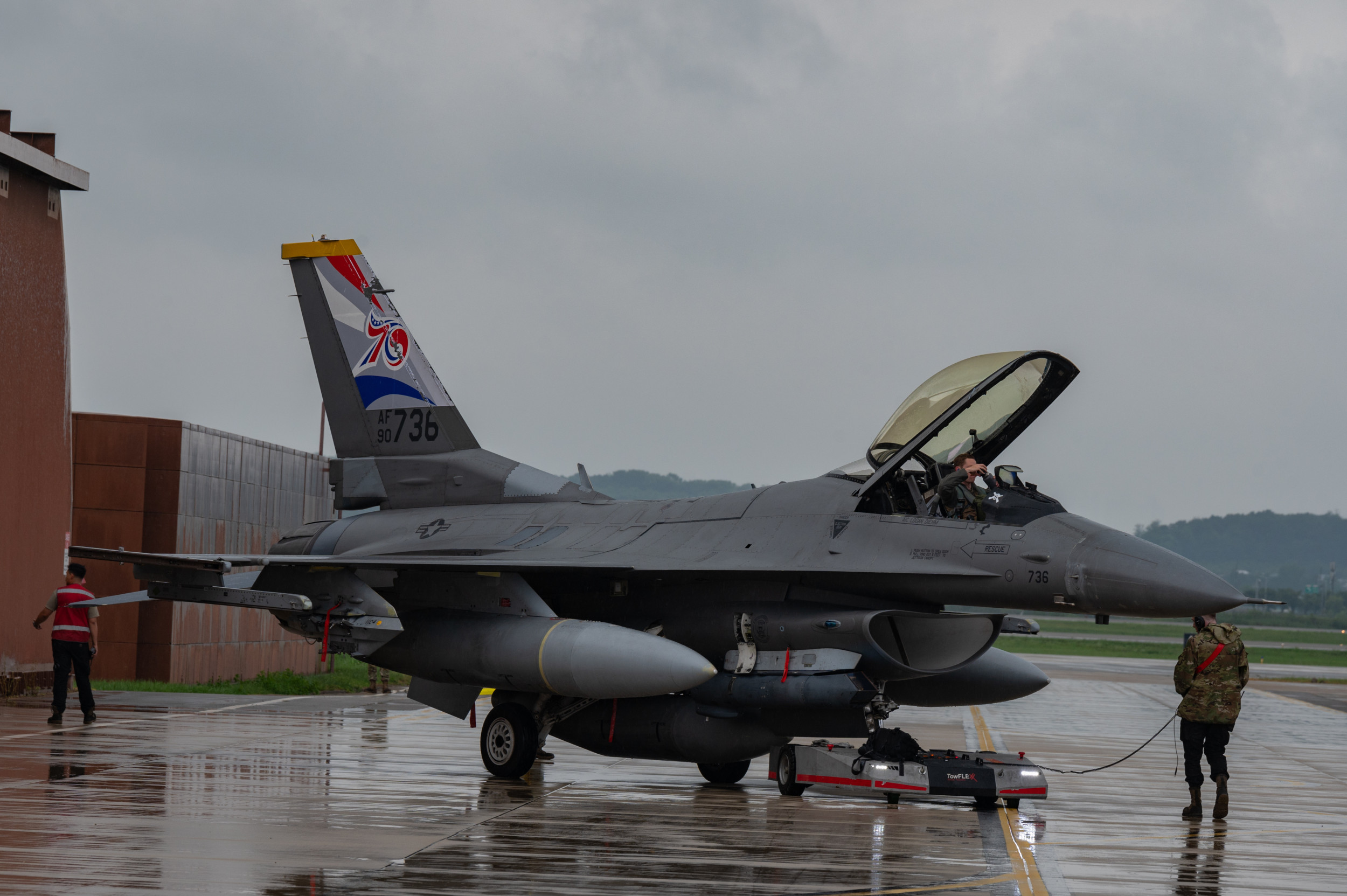The United States Air Force has created a “super squadron” in its ally, South Korea, by moving more fighter jets near the frontline with North Korea to maximize combat effectiveness.
The change in the U.S. forces deployed in the Korean Peninsula comes as North Korea has sent over 2,000 “garbage balloons” into its neighbor in the south since late May, and its leader Kim Jong Un enhanced military cooperation with Russian President Vladimir Putin.
The July 18 announcement was made by the Seventh Air Force, an operational unit under the command of the Pacific Air Forces that is responsible for air operations in South Korea. It operates F-16 Fighting Falcon fighter jets and A-10 Thunderbolt II attack planes.
Nine F-16s will relocate and reassign from Kunsan Air Base’s 8th Fighter Wing to Osan Air Base’s 36th Fighter Squadron this summer, the Air Force said in a statement. The new arrivals will bring the number of Fighting Falcons stationed at Osan Air Base to 31.
Airman 1st Class Chase Verzaal/U.S. Air Force
Osan Air Base is located about 52 miles south of the Military Demarcation Line (MDL), the de facto border between the North and the South since the Korean War armistice of 1953. The distance between Kunsan Air Base and the MDL is about 128 miles.
The F-16 has a ferry range of more than 2,002 miles and is capable of employing a variety of air-to-air and air-to-surface munitions, according to the Air Force’s fact sheet. Pyongyang, the capital of North Korea, is located approximately 150 miles north of Osan Air Base.
The “super” 36th Fighter Squadron will be tested for a year to evaluate its impact on sortie generation, maintenance, manpower and logistic requirements. This change demonstrated commitment of the U.S. to the defense of South Korea with its ally, the Air Force said.
The mission of the 36th Fighter Squadron is to “prepare for and execute immediate air combat operations” to dominate aggressors threatening the interests of the U.S. or South Korea, according to a fact sheet posted by Osan Air Base on its official website.
The squadron operates a fleet of combat ready F-16 with the capability to conduct air interdiction, close air support and counter-air missions in both day and night conditions.
This is an opportunity to assess “if squadrons of this size increase our training effectiveness while also increasing our combat capability if deterrence fails,” said Lt. Gen. David. R. Iverson, the Seventh Air Force commander and the U.S. Forces Korea deputy commander.
Besides the fighter jets, 150 aircrew and support personnel will be also transferred to Osan Air Base. The rest of the F-16s at Kunsan Air Base will continue to participate in training to strengthen interoperability and sharpen the combined readiness of the U.S.-Korea forces.

Cpl. Calah Thompson/U.S. Marine Corps
On Tuesday, the U.S. and South Korea began a combined air exercise at an air base in Suwon, a South Korean city located 19 miles south of the capital Seoul. The exercise aims to strengthen joint U.S.-South Korea combat capabilities against North Korea‘s threats.
The exercise, which is scheduled to run until August 8, featured multiple fighter jets from both sides, such as F/A-18 Hornets and stealthy F-35B Lightning IIs from the U.S. Marine Corps, as well as South Korean air force’s F-15K Slam Eagles and F-16 Fighting Falcons.
Newsweek has contacted the North Korean Embassy in Beijing for comment by email.
Uncommon Knowledge
Newsweek is committed to challenging conventional wisdom and finding connections in the search for common ground.
Newsweek is committed to challenging conventional wisdom and finding connections in the search for common ground.
